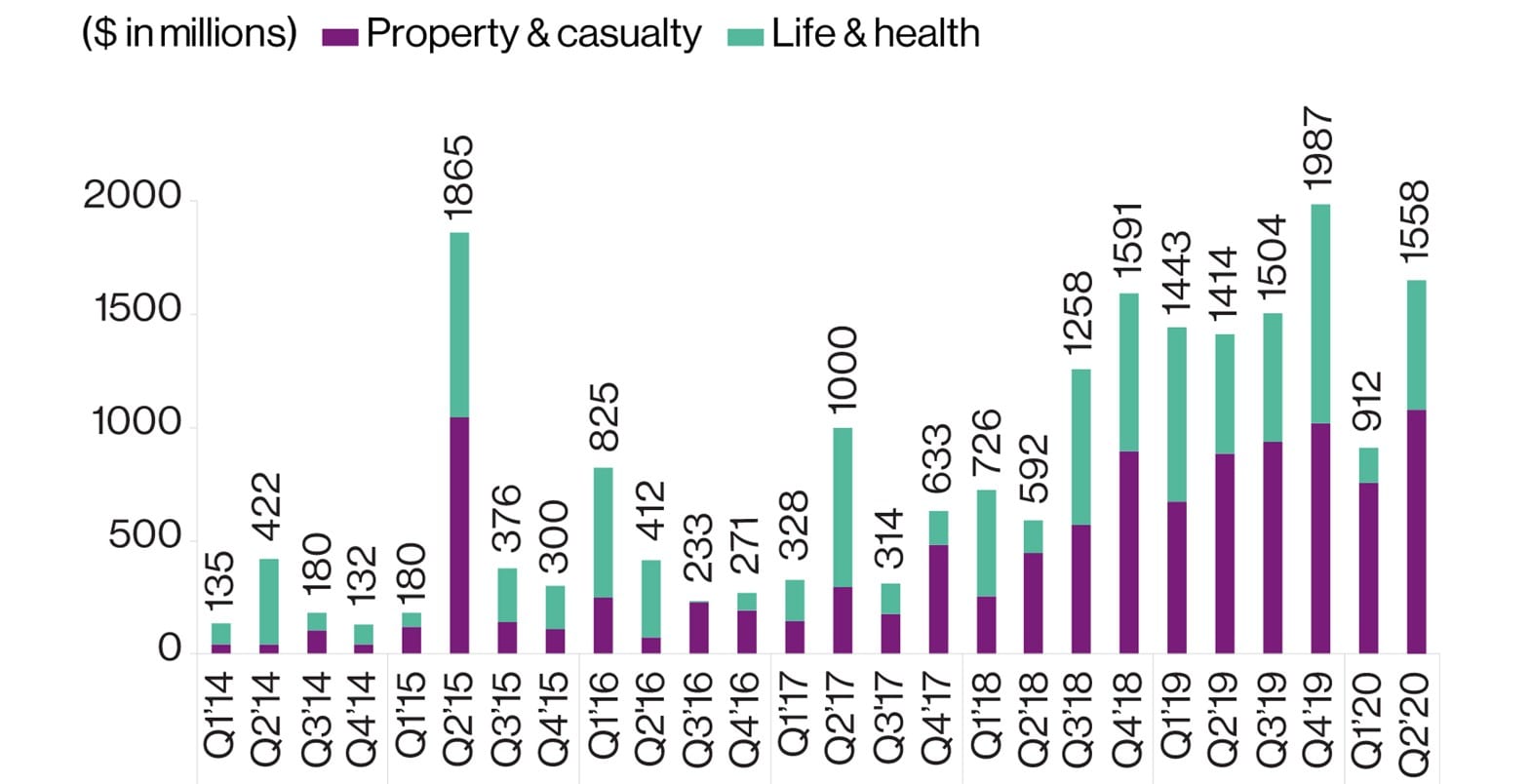Open insurance, while still in its infancy, will drive business revolution by promoting tech-driven collaboration and service-oriented solutions. Insurers needs to ensure they enable various digital building blocks that will shape future insurance business models in the “new digital normal”. Making the transition successfully will require technology leadership teams to work closely with the business to define clear visions.
The 2008 financial crisis forced the banking industry to reduce costs and improve the transparency of its regulatory submissions by applying the latest advancements in digital technology. The insurance industry has not had the same external market pressure but has been closely watching these advancements.
The rise of fintech and InsurTech startups along with efforts by major digital vendors now mean that doing nothing is no longer an option for banks that wanted to keep their customer base and avoid being disintermediated by new entrants.
How can insurers stand ready for this same level of digital transformation?
The dash to digitalise
Whether it is the way we buy insurance, the design of products available to us, how they are priced, or how we go about making a claim on a policy, society has been witnessing a breakthrough in how the insurance industry uses technology. In many ways, this process replicates what has taken place in banking since the financial crisis.
There are three key trends that, taken together, are helping to define the current landscape. These factors illuminate why insurers need to be digitally enabled to succeed and what they may need to do to adapt.
The first is the level of investment. As a proxy for innovation that is happening within the industry right now, investment in InsurTech is a gauge of digital change and how insurers may need to engage with and/or benefit from InsurTech, be that through direct investments, incubators, partnerships, or collaborations. Common standards are another factor. Taking lessons from the open banking initiative, open insurance, while still in its infancy, looks set to drive a similar business revolution by promoting application program interface (API)-driven collaboration and business service-oriented solutions.
Finally, digital enablers, which are key technology building blocks that make up an insurer’s technology stack, are having and will continue to have, a significant impact on the way the sector does business.
Level of investment
The money going into InsurTech gives a good sense of the areas of focus and the level of insurance innovation currently underway. For example, funding has been steadily rising in the life, health and property & casualty markets.
The graphic below - from Willis Towers Watson’s Q2 2020 InsurTech Briefing - illustrates quarterly InsurTech funding volume.

Clearly, InsurTech can be a driver for disruption. But more importantly, it is also a catalyst for the evaluation, commercialisation and introduction of new technologies and practices into the mainstream.
Current InsurTech investments are typically concentrated in the following four main areas.
- Enhancing customer experiences
A fundamental aspect of digitalisation is to connect insurers and brokers so that everyone in the value chain, including customers, can exchange data in a meaningful way. It is about making the journey customer-centric rather than product-centric. Moreover, there are real possibilities to create broader client buying experiences that may also involve upsell, cross-sell or event-driven opportunities.
- Harnessing advanced analytics
Predictive modelling solutions, including machine learning, are enabling companies to improve pricing, claims and underwriting performance. Data-driven insight and platforms can not only support real-time distribution and enhanced client relationships but also provide decision support to allow, for example, underwriting and claims experts to focus time where they can add the most value.
- Reducing risk through automation
The typical use of process automation and governance software allows companies to automate data and analytical workflows, streamline business processes and reduce costs. It also enables increased operational resilience by increasing computation power and reducing the reliance on key individuals and significantly decreasing the probability of human error.
- Improving IT performance
Through digital stacks, companies are taking advantage of software-as-a-service and distributed, scalable computing. This naturally reduces the baseline cost of existing and new technology architecture.
With these themes in mind as more InsurTech businesses shift their focus to back-office operations, traditional insurers will benefit from their established client bases, their domain knowledge, and most importantly, their historical and unstructured data. Taken together, these trends pave the road to digitalisation.
Common standards — in banking, and now insurance
The second key driver for the digital technology transformation is the open standards that the financial services industry has been developing to establish more market transparency and access to services.
In the UK, for example, open banking allowed the nine biggest banks to release their data in a secure, standardised form, so the data can be shared more easily between authorised organisations online. The Open Banking Implementation Entity (OBIE) was created to deliver the APIs, data structures and security architectures that will enable developers to harness technology, making it easy and safe for banking clients to share the financial information held by their banks with third parties.
This initiative has led to a significant disintermediation of the banking value chain. Historically, vertically integrated banks now need to behave as bilateral traders in the ecosystem. According to the OBIE’s research, banks that ignore this initiative will have 29% of their revenues at risk, while the early adopters will add 55% to their revenues through the new open architecture opportunities.
Open banking is also a great vehicle to provide fundamentally new user experiences in, for example, account aggregation services: Users can see all their financial transactions in one structured app that seamlessly connects to hundreds of financial providers, including cards, investments, and retirement data.
The banking industry is experiencing the profound impact of its open standards. So what does this mean for the insurance industry?
Potentially a lot. Accenture’s 2019 Disruptability Index, which analysed more than 3,000 companies across 20 industries, found that insurance is one of the sectors most vulnerable to future disruption. Accenture also found that 58% of insurers were actively seeking new business models, 82% thought that building ecosystems with other insurance and technology providers would allow them to grow in ways that are not otherwise possible, and 75% believed they would generate half of their revenues from partner ecosystems in the next five years.
Insurers are still in the early stages of experimenting with open insurance, but those that sit on the sidelines could find themselves at risk. The European open banking journey showed that banks that chose not to embrace open banking created openings for fintech startups, such as the digital bank Revolute, to establish themselves and seize market share.
As if insurers needed further convincing of the potential acceleration toward open insurance, regulators are already on the scent. For example, the UK’s Financial Conduct Authority recently initiated a “call for input” study that will give greater clarity to the future direction of travel for the open insurance initiative.


This article was written by Max Drannikov, Senior Director, Insurance Consulting and Technology, and Charlie Samolczyk Director, Insurance Consulting and Technology, Willis Towers Watson.
The article is reproduced with the kind permission of ICMIF Supporting Member Willis Re.
Digital enablers: Insurer building blocks
If we regard InsurTech and open insurance as driving a digital transformation pathway from the top-down, what might insurers need to do from their side to meet up with it?
What follows are five technical building blocks that will be key to insurer success. Enterprise architects might argue for more than five, but we feel it is more important at this stage to focus on the right technology that will drive open insurance-like initiatives.
Block 1: Maximising cloud computing and infrastructure
A lot of us have experience with cloud storage and apps in our daily life. Yet, in most insurance enterprises, adoption has been slow. Operational inertia, issues with legacy systems, data sovereignty sensitivities, security architecture and problems with suitably qualified talent recruitment — all have commonly led to varying degrees of technical debt in insurance companies.
Cloud technology could and should appeal because of its simplicity and agility. To drive that message home and counter what, are misconceptions of the cloud that are leading to missed opportunities to reduce that debt, the role of the enterprise technology leadership is very significant. They and their senior teams will be pivotal in championing the cloud. If successful, this will bring massive benefits throughout the enterprise, including more time spent on innovation, not on running legacy IT estates, solutions scalability and agility and accelerating the idea-to-product life cycle.
Block 2: Advancing the ability to plug into a connected ecosystem
Connectivity is a very broad term and covers multiple technologies and solutions. But most relevant in this context are APIs (software intermediaries that allow two applications to talk to each other), as they were the main enabler of open banking and are likely to play a similar role in open insurance. Here are a few reasons why:
- APIs help improve user experience through simple drag-and-drop integration, together with built-in data models and processes. What used to take IT professionals months to build can now be done in seconds by the end-users.
- APIs reduce the time and security risk of manual system integration.
- Modern APIs are usually easily migratable to the cloud.
- APIs provide almost unlimited opportunity to tap into a growing ecosystem of insurance and technology partners.
- With APIs you can expand services and find new sources of revenue.
- APIs support automation, helping organisations to achieve fast integration between different products.
Block 3: Automation
This can mean anything from simple data collection and monitoring to the deployment of robots to perform routine, repeatable, rules-based tasks, leading all the way to very complex orchestration of nested workflows involving multiple machines, people, organisations, data sources and processes that may run over several weeks.
Automation can also bring enormous efficiency to an end-to-end actuarial process. Because the process is event-driven rather than user-driven, there are some key benefits such as the fact that it operates 24/7 with no downtime overnight and no COVID-19 impact. As a result, the workdays are reduced; resources required to perform routine valuations are reduced and the process includes built-in governance and reduced key person risk.
Block 4: Insight
What are the insights — the knowledge companies gain from analysing sets of information — needed to help businesses gain a deeper understanding to make informed decisions and reduce business risks? Insights can be underlying data — either structured (e.g., databases and spreadsheets), semi-structured (e.g., documents, logs) or unstructured (e.g., images, voice) — and the business-relevant conclusions drawn from analysing that data. According to an IBM study, poor data quality costs the US economy over USD 3 trillion annually.
Companies, as a result, can rethink the role of a claims handler using a blend of insight, automation, and artificial intelligence (AI). This requires a critical look at the tasks a claims handler performs to assess which of those tasks should remain with the claim’s handler, which tasks can be automated to save time, and which tasks would benefit from data insight and AI to assist the claims handler in making better, faster, and more consistent decisions.
Block 5: Digital business services
Digital business services and platforms cover a wide array of policy administration, customer relationship management, enterprise resource planning and other types of platforms. These are often very expensive software systems that form the backbone of the middle and back-office architectures.
There is a lot of evidence that systems providers have started integrating new digital technology trends. In the future, even these multifunctional, often complex, and monolithic applications will become a lot more open and cloud-based and built around more granular-level service modules — almost like an IT Lego set.
Challenging the norms
As these IT building blocks become more ingrained across the insurance industry, and as the two drivers of digital transformation highlighted further take shape and solidify, current norms will become further challenged.
Technology will increasingly play a key role in shaping future insurance business models, and the push for common technology industry standards will accelerate the pivot to a “new digital normal.” Making the transition successfully will require technology leadership teams to work closely with the business to define clear visions. It will also put pressure on the technical acumen of people working outside, but increasingly alongside, technology.
Such shifts are symptomatic of how traditional lines of thinking about “the business” or “technology teams” as separate things are already becoming blurred and may well in the future be erased.





